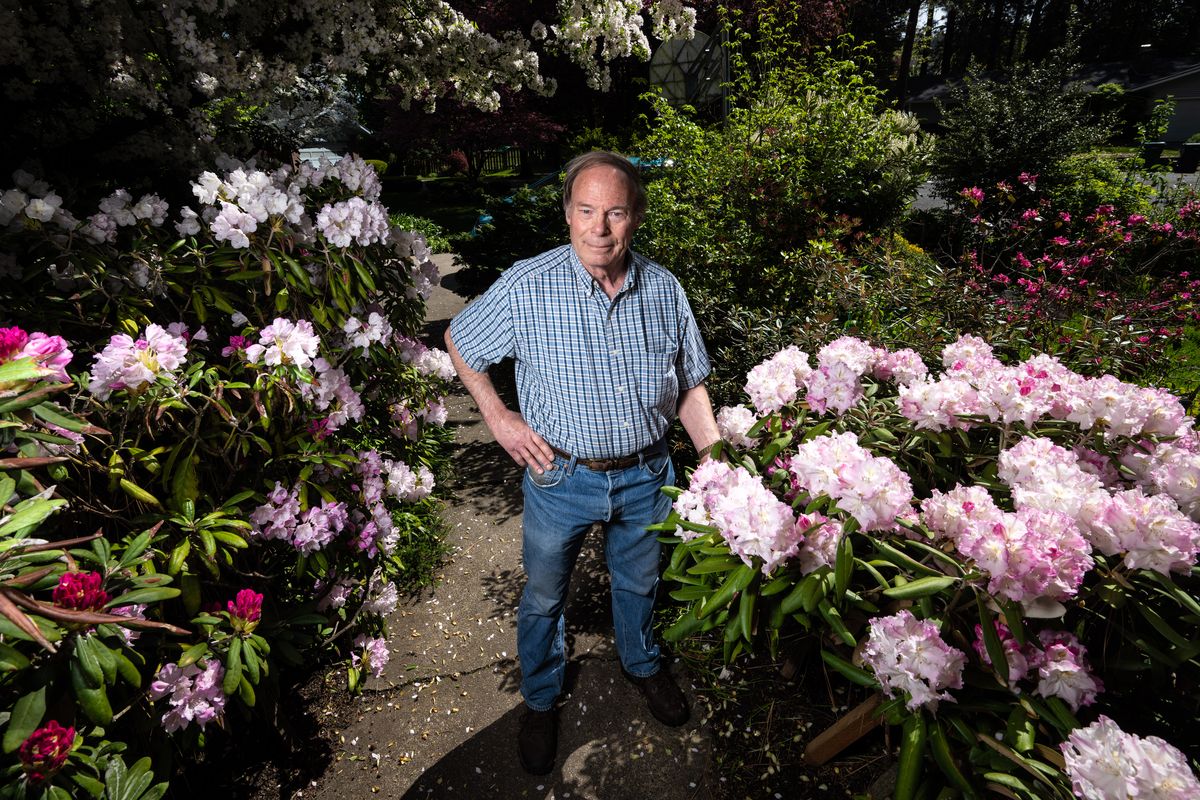Gardening: Caring for rhododendrons takes patience

When I first drove up to Scott Stowell’s Indian Trail home, I thought I was back in Western Washington. Tall red cedar trees surrounded the house sheltering his collection of rhododendrons blooming in shades of pink and white. A crabapple tree was in full bloom near the front door and full of bees.
Stowell and I had been trading emails over the winter so that we could get together when his plants came into bloom. We waited and waited until the Stowells were leaving on a trip and it was now or never even if only half the rhodies were in bloom. “Everything is two weeks late this year,” said Stowell.
When the Stowells moved into their house 45 years ago, there was nothing there but a bare lot. Having grown up around family on the West Side who were diehard rhodie fans, Stowell set about planting his garden a little bit at a time. He planted cedars, Douglas firs and a few alpine firs to provide shade for the rhodies. He then began planting rhododendrons of all kinds. “I buy mostly from Western Washington nurseries when I get over there because they have a good selection of species varieties.”
Caring for rhododendrons in Spokane takes patience. They need shade from our hot sun especially in the afternoon. Their roots are fine and shallow so keeping them watered is critical. They like an acidic soil rich in humus. Since our soils here are not particularly acidic, Stowell uses a fertilizer made for acid-loving plants. “I order 50-pound bags of Holly-Tone fertilizer online and that seems to keep them happy.” There are other brands available locally at the garden centers.
When selecting varieties for his garden, Stowell has to pay attention to the hardiness of the plants. Here in Spokane, we are on the line between USDA Zones 5 and 6, so it’s best to select varieties that are hardy to at least 10 below zero. Stowell grows several hardy varieties including PJM which blooms bluish purple early in the spring and several varieties of Rhododendron yakushimanum otherwise known as Yak rhododendrons that are hardy to minus 25. One of the reasons the Yaks are hardy is because the undersides of the long leaves are covered with a rusty-colored fuzz that helps protect the plants from desiccating winds. The Yaks are blooming now with a dark pink bud that fades to pink then white as the flower opens.
If you have rhododendrons, now is the best time to give them some attention. Fertilize with a rhododendron/acid-loving plant fertilizer and check the sprinkler heads nearby. Mulch them with shredded leaves or pine needles. If the plants are leggy, trim back the long branches. The branches will grow new leaves over the next few weeks.
Tip of the week: Because our spring temperatures stayed in the low 50s while fruit trees were blooming, bees weren’t out to pollinate, as a result, we are likely to have a spotty fruit set this year.